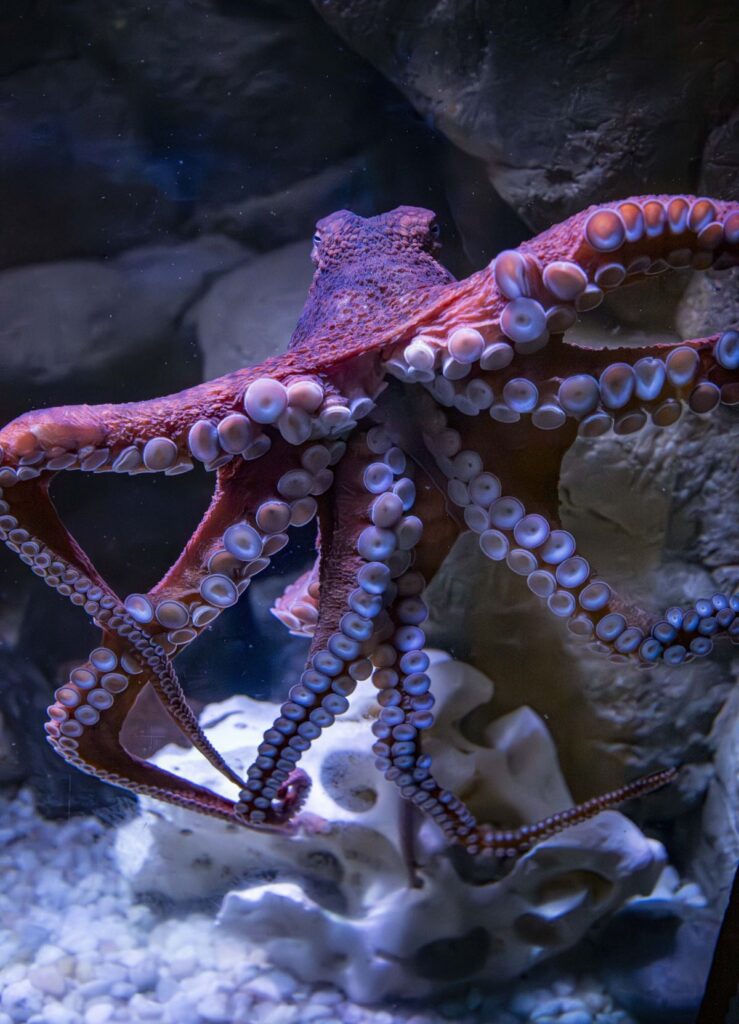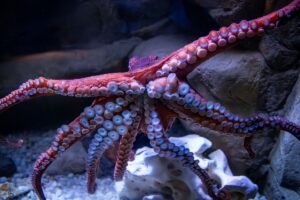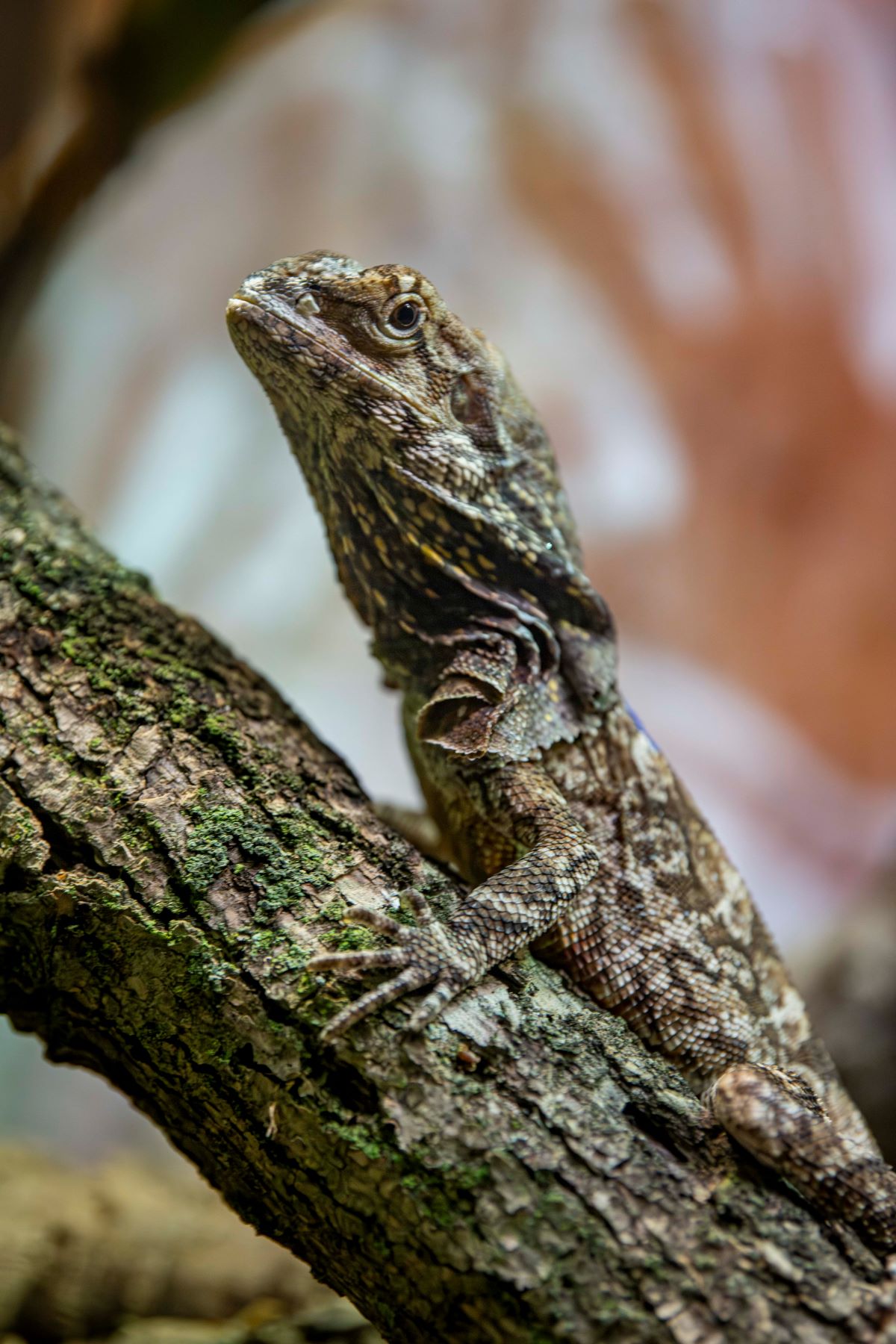
A giant Pacific octopus and several species of lizards are now publicly viewable in the Aquatic & Reptile Center (ARC) of the Milwaukee County Zoo.
The octopus is female and named Flurry. She weighs around 10 pounds and is estimated to be about 1 year old. Flurry came to MCZ in mid-December and has settled in well to her habitat, which received a new filtration system before her arrival.
The animal care team notes that Flurry is laid back and more active in the late afternoon. At rest, her skin is smooth and typically reddish-brown in color. Like other giant Pacific octopuses, she can change the color and texture of her skin to camouflage herself. These octopuses are also typically den-dwellers, so if you can’t spot Flurry, look to the upper right of the habitat to see if she’s tucked herself away.
And a new habitat in the ARC — with animals native to the Indonesian/Australian region — includes two frilled dragons and a blue-tongued skink. 
The frilled dragons, named Baby Frank and Trogdor, arrived at MCZ in November 2023 and were behind the scenes until they grew large enough for the public habitat. They’re now almost 2 years old, and both are unsexed. To identify them, the animal care team has added a blue colored dot to Baby Frank and red to Trogdor, until the marks are eventually shed off.
The frilled dragons are a new species to the MCZ. The animal care team shares that Baby Frank and Trogdor are fairly relaxed, and although they’re named for their “frills,” guests shouldn’t typically see them displayed. (When threatened, this species can inflate the frills around the neck to appear larger and more intimidating.)
The blue-tongued skink, a 5-year-old female not yet named, shares the habitat with the frilled dragons. MCZ hasn’t had this species in its population since the ’80s. The skink continues to increase her confidence and isn’t always visible. When she is, guests will notice her long and tubular body covered in overlapping scales, with a broad, triangular head and short legs. A voracious eater, guests might also catch a glimpse of the skink’s distinctive blue tongue.
On your next visit to the Zoo, swing by the ARC to check out all of the latest residents!
Giant Pacific Octopus Fast Facts:
Frilled Dragon Fast Facts:
Blue-Tongued Skink Fast Facts:


© 2025 Milwaukee County Zoo. All Rights Reserved | Privacy Policy